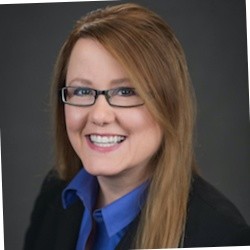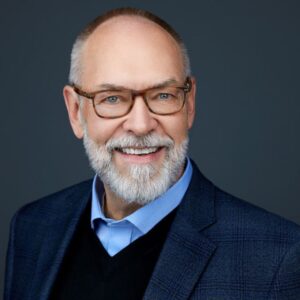Health, housing focus of new task force
Vin Weber’s 86-year-old mother moved to a retirement community a year ago, the Republican former congressman from Minnesota relayed this morning.
 “We had a vision consultant meet with her last week. I didn’t know what that was,” he said. “I thought, ‘She has already seen an ophthalmologist.’ That’s not what a vision consultant is. It’s someone who would try to help her cope with the different problems in terms of her physical space, if you will, that arose from the fact that she was suffering from dry eye and macular degeneration. And it just made me think about the fact that there is this constant linkage between the health of our seniors and the physical space in which they live.”
“We had a vision consultant meet with her last week. I didn’t know what that was,” he said. “I thought, ‘She has already seen an ophthalmologist.’ That’s not what a vision consultant is. It’s someone who would try to help her cope with the different problems in terms of her physical space, if you will, that arose from the fact that she was suffering from dry eye and macular degeneration. And it just made me think about the fact that there is this constant linkage between the health of our seniors and the physical space in which they live.”
Weber is bringing personal perspectives such as this one as well knowledge gleaned from 12 years in the U.S. House of Representatives to bear as he begins work on the Bipartisan Policy Center’s (BPC’s) new Health and Housing Task Force. Joining him in leading the one-year effort are former U.S. Department Housing and Urban Development (HUD) Secretary Henry Cisneros (D-TX), former HUD Secretary and Sen. Mel Martinez (R-FL) and former Rep. Allyson Schwartz (D-PA). They detailed the entity’s expected work in a call with select members of the media today.
 “All of us…have parents or grandparents who are in that age group and who are confronting these kinds of questions right at the juncture of health issues and housing questions,” said Cisneros, who has participated in BPC’s task forces on debt reduction and immigration as well as its Housing Commission. “It means everything to those individuals, it means everything to families, to communities, and, indeed, has massive implications for the country from a budget standpoint and a commitment, a recognition of what we owe our elders.”
“All of us…have parents or grandparents who are in that age group and who are confronting these kinds of questions right at the juncture of health issues and housing questions,” said Cisneros, who has participated in BPC’s task forces on debt reduction and immigration as well as its Housing Commission. “It means everything to those individuals, it means everything to families, to communities, and, indeed, has massive implications for the country from a budget standpoint and a commitment, a recognition of what we owe our elders.”
By 2030, the U.S. population of 65-year-olds as well as the population of 85-year-olds will double, he noted.
Starting with the viewpoint that stable, affordable housing can improve health outcomes for individuals and reduce costs for the healthcare system, the task force expects to release in the first quarter of 2016 recommendations designed to help Congress and the administration meet the needs of the country’s aging population, the majority of whom wish to “age in place” in their homes. The task force will craft additional recommendations for state policymakers and senior housing and services providers. To get to that point, group members plan to meet quarterly in person, hold regional conversations about successful state models and form an advisory council of technical experts to consult on housing, healthcare and transportation matters.
The issues
Some of the issues the task force will examine:
• How to cost-effectively modify homes and communities—or develop new, affordable housing stock—to make independent living for seniors safe and viable. Identifying potential funding sources will be critical.
Surveys indicate that the majority of seniors wish to age in place in their existing homes, “but many of those homes are not appropriate—either in size or cost or accessorizing—for a graying population,” said Cisneros, the co-author of the book Independent for Life: Homes and Neighborhoods for an Aging America.
 Martinez, who co-chaired BPC’s Housing Commission and is a former ranking member of the Senate Special Committee on Aging, added: “Whether it’s the steps of entry, wider hallways, accessible electrical controls, strong grips in the bathroom shower areas—so many of these things are really designed simply to assist seniors to live in place [and] just do not exist” in current housing stock. “Our communities are not designed and built for that same type of living, with lighting, sidewalks and transportation options,” he added. Walkability is a concern, too, Schwartz said.
Martinez, who co-chaired BPC’s Housing Commission and is a former ranking member of the Senate Special Committee on Aging, added: “Whether it’s the steps of entry, wider hallways, accessible electrical controls, strong grips in the bathroom shower areas—so many of these things are really designed simply to assist seniors to live in place [and] just do not exist” in current housing stock. “Our communities are not designed and built for that same type of living, with lighting, sidewalks and transportation options,” he added. Walkability is a concern, too, Schwartz said.
Katherine Hayes, BPC director of health policy, said: “Our hope is that if you, as within the duals project, look at some sort of captivated system of care in which a managed care plan, for example, is given Medicaid funding and Medicare funding, that they could demonstrate enough savings on the Medicare side to be able to finance at least some minor home modifications in some of these models.”
 • Ways to overcome barriers to offering home- and community-based services (HCBS) and supports through Medicaid.
• Ways to overcome barriers to offering home- and community-based services (HCBS) and supports through Medicaid.
“Being able to find the solutions that would enable state support and state expenditures on the appropriate long-term services and supports [LTSS] and long-term care to support the families and to reduce the barriers between state programs and federal programs between housing and health will be extremely important if you’re going to get the services that are necessary for seniors at a cost that both families and the government can afford,” said Schwartz, a 10-year congresswoman and a 14-year state senator.
• Opportunities for increased collaboration between HUD and the Health and Human Services Department (HHS).
“We function far too often in silos,” said Schwartz, who spent many years on House Ways and Means Committee and Budget Committee. “We need to understand the intersection between health and housing.” Relatively simple solutions, she added, might save “real dollars.”
Weber, a former member of the House Appropriations Committee, added: “Coordination and reduction of bureaucracy is always desirable, but it’s more essential than ever as we think about the very serious budgetary problems we face long-term. There have been joint HUD–HHS initiatives in recent years, but our sense is that more can be done.”
Combined, the two agencies have a $1 trillion budget, he said, adding: “When you think about it in those terms, this is, indeed, an issue that rises, really, to the level of a national security issue.”
Potential solutions
The task force’s work will build on the work of BPC’s Housing Commission, its Health Delivery System Reform and Long-Term Care initiatives and its Commission on Retirement Security and Personal Savings.
“One idea proposed by the Housing Commission was to expand the scope of the energy department’s weatherization assistance program to include home assessments and modifications that would enable more people to live in place,” Martinez said.
Cisneros added: “One could envision a package that would create ‘the lifelong home,’ with grab bars in the restroom, lighting for night security, elimination of some stairs within the house or at the entrance, lowering kitchen cabinets so people can reach them, bathroom fixtures, wider entrances to the restroom for the day when the person needs a wheelchair.”
Among the other ideas on the table is the reimagining of existing governmental programs such as low-income housing credits and HUD’s Section 202 program.
What about traditional models?
So where do entities such as continuing care retirement communities and assisted living communities fit into the task force’s efforts?
“Under the current dual demonstration projects, the [Centers for Medicare & Medicaid Services] is entering into three-way contracts with the state, the federal government and a managed care plan to integrate Medicare and Medicaid services,” Hayes noted. “For this project, we’ve been thinking about the potential of some sort of four-way contract in which some housing entity, such as an assisted living facility or a continuing care community, might be a part of this, to integrate housing, healthcare and LTSS.”
Cisneros added: “At a minimum, we need to consider the interrelationship between people living on their own and then various kind of congregate, assisted and other facilities, because they’re kind of a continuum, but people also, as you know, go in and out. Someone may have a fall. They go to a rehabilitation facility, then the doctor gives the family a choice: whether they can go back home or whether they go to an assisted living facility. They may go there for a while, feel strong enough that they want to go back home, etc. So there’s lots of inter-combinations here that are real life, and at a minimum, we need to look at all the ways that people live and how we can keep people as healthy for as long as we can.”
Schwartz said: “We need to think more broadly about…having different agencies, different programs, different supports working across their own sectors to consider the obstacles for care that may not be in their own silo.”
Regarding home healthcare services, Hayes said the BPC is examining why some states have not been more aggressive in offering HCBS with federal assistance. Perceived barriers, she said, may include budget issues, difficulty in attracting providers due to low reimbursement levels, lack of awareness of options and missing technical expertise needed to negotiate with HHS. The BPC will try to develop policy recommendations to encourage adoption of these options, Hayes said.
Reasons for hope
The task force faces a daunting job, but Cisneros said members have reasons for hope.
“It’s a massive issue for our society because the dimensions of aging are so great,” he said. “We will have large numbers, but we’re also going to have a robust economy to support it. It’s just a question of how we create the financial structures.”
Related content:
New initiative looks for solutions to LTSS challenges
A growing market: Affordable senior housing
2015 Business Outlook: Service reach

Lois A. Bowers was senior editor of I Advance Senior Care / Long-Term Living from 2013-2015.
Related Articles
Topics: Articles , Executive Leadership , Housing











